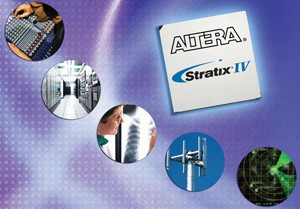Choice of process node
Process nodes are available in 45nm, 40nm, 32nm, 28nm, 22nm, 20nm and 16nm values. The 10nm nodes are already under development.
From the user’s perspective, a process node is not everything and the user does not have much control on it. Provided a device meets the design specifications, power and cost budgets and availability, designers often tend to overlook the process node.
However, because of the reduction in process node values, the newer dyes are much denser and hence, for the same dye size of an older process node, more logic can fit in on the lower process node devices. Thus, lower process node certainly provides higher performance if the chip is fully utilised.
Up to 130nm, as the process node is lowered, the power and cost are also reduced. Beyond that, any decrease in size of the transistor will cause leakage to increase. This results in higher power consumption. Due to this reason, relatively higher process nodes are more preferred for low-power consumption applications.
When we consider the higher power consumption due to leakage, the higher clock rates that new nodes provided did not seem as much of a value proposition for every designer. But now with the introduction of FinFET technology, the semiconductor fabs and so FPGA firms are able to solve this problem to an extent.
New and exciting fields of application
While the bread-butter market for FPGAs has always been wired/wireless communications, FPGA products have forced their way into a variety of markets, such as industrial, medical, automotive and consumer electronics.

Nowadays we come across FPGAs in almost every field. They are used to power various devices ranging from miniature, wearable and handheld devices to smartphones, auto infotainments and medical equipment. They are also used in complex rugged systems, such as military and defence equipment and satellite systems. Additionally, FPGAs are being used in small glue logic implementations to high-speed computing applications.
High-performance video applications
FPGAs are playing a huge role in video applications. With large on-chip memories, DSP blocks and high-performance logic fabric, the FPGAs are being used to implement entire image pipe with multiple video IPs, implementing the compression algorithms and high-speed interfaces for videos.
The video applications require frame or line buffering at multiple points in the path. With HD video, the video resolution and the frame rates have increased. With high-performance devices, DDR memory interfaces, readily-available DDR controller IPs and high-speed I/Os, the FPGAs are meeting the required high bandwidth for video applications.
FPGAs in other fields
The wearable electronics market has been touted as the next big wave in consumer electronics industry. Low-density and ultra-low-density FPGAs are well-positioned to ride this wave. In addition, we see success in complementary markets such as human-machine interface (HMI), office printers and imaging sensor characterisation.

Surveillance cameras, consumer electronics and medical imaging are the domains where FPGAs are being used extensively. They are also used in some domains where there are stringent security standards for the design to be implemented, such as avionics. The cockpit display systems, data acquisition and control mechanisms are all powered by FPGAs. Defence is yet another sector where the FPGA usage is high for a variety of applications.
FPGA as a hardware accelerator
High-performance computing and hardware accelerators are some of the new areas where FPGAs are getting introduced. For example, in stock exchange, where decisions are to be derived based on fast computations, possibilities of platforms having multiple FPGAs with design comprising register-transfer level (RTL), soft-core processor and high-speed serial interfaces with host system are being explored.
Computation-intensive algorithms, such as encryption, decryption and compression, are getting off-loaded from software applications running on processors and are getting implemented as hardware accelerator IPs in FPGA.
Why an FPGA
For products that are not sold in huge volumes, it makes sense to provide the solution on FPGA. This helps you reduce the number of overall devices on the board, making the board compact and design more secure. This makes reverse engineering difficult and brings up the design much quicker than earlier days, to reach the market faster.
The industry is all about being smarter these days. Now what we need more is not just higher bandwidth but also the ability to transmit more intelligent data in the given bandwidth. FPGAs have come a long way to help the designers meet such requirements.
The author is a dancer, karaoke aficionado, and a technical correspondent at EFY. Find her on Twitter @AnuBomb.






